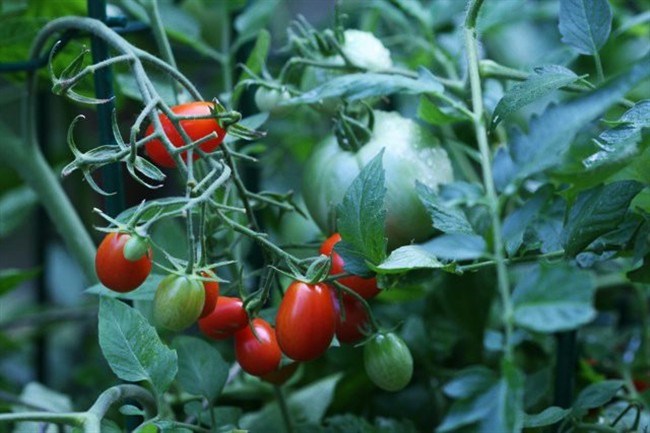Vegetable gardening is an exercise in patience. Sweet potatoes can take more than 100 days to ripen; some tomato and watermelon varieties require five months.
But there are ways to shorten the wait.
The easiest is choosing plants that taste best when harvested young.
"The one thing you will miss out on with speedy growing is bulk, but what you will get in return is layers of flavour; a sprinkle of hot and peppery micro-green radish here, a sweet and nutty, barely cooked new potato there, a garnish of cucumber-y borage flowers to finish a dish," writes Mark Diacono in the new "The Speedy Vegetable Garden" (Timber Press). "These are the crops that will mark out your cooking as distinctly and unquestionably homegrown."
Timing is everything.
"Be slow to harvest and you'll miss their best moments," says Diacono, who does his gardening on a 17-acre plot in Devon, England. "These are fresh, lively and zingy flavours, flavours that can either fade or become bitter and overly strong as the plant grows on toward maturity."
Many plants — notably fruits — are genetically wired for late development.
"Tomatoes, strawberries and apples all want to be left on the plant until they are fully ripe to get the fullest, lushest flavours out of them," Diacono says. "Vegetables are a little different. Many get woodier, less succulent and lower in sweetness as they grow more mature, so really are at their loveliest picked young."
That would include new potatoes, radishes, baby carrots, zucchini, miniature cucumbers, spring peas, turnips and beets.
Cut-and-come-again salad leaves can be clipped in as little as 21 days. Sprouted seeds (mung beans, mustard, lentils) can become table fare in just three days.
Check the maturity dates on seed packets as you shop. Heirloom tomatoes take 100 days or more to develop while cherry tomatoes need only about 65 days.
The same goes for squash. Winter squash (acorn, butternut) generally require 110 days before they are kitchen-ready. Summer squash (crookneck, zucchini), by comparison, can be eaten in 55 days or less.
There are many ways to jumpstart the growing season so you can be harvesting a meal while other gardeners are just beginning to turn the ground. Among them:
— Choose the warmest site possible if you're planting early. "Even a small change in temperature can make a difference during spring and fall frosts," says Jo Ann Robbins, an extension educator with the University of Idaho.
— Use enclosures. Covering plants moderates temperature, wind and humidity. "Air and soil temperatures are warmer, and the cover will conserve heat radiation from the soil during the night," Robbins says in a fact sheet.
— Start vegetable plants inside from seed, and transplant them eventually into the garden. "Research shows the older the transplants, the better they will resist cold weather," Robbins says.
— Warm the soil early. "Throw a piece of black or clear polyethylene over the soil in early spring, pin it down with tent pegs or bricks, and wait," Diacono says. "The sun will warm it and excessive water will be kept off, leaving it in a fantastically workable state a few weeks later and conducive to quick plant growth."
___
Online:
For more about plant maturity dates, see this North Dakota State University fact sheet:
http://www.ag.ndsu.edu/pubs/plantsci/hortcrop/h912.pdf.
You can contact Dean Fosdick at deanfosdick(at)netscape.net



